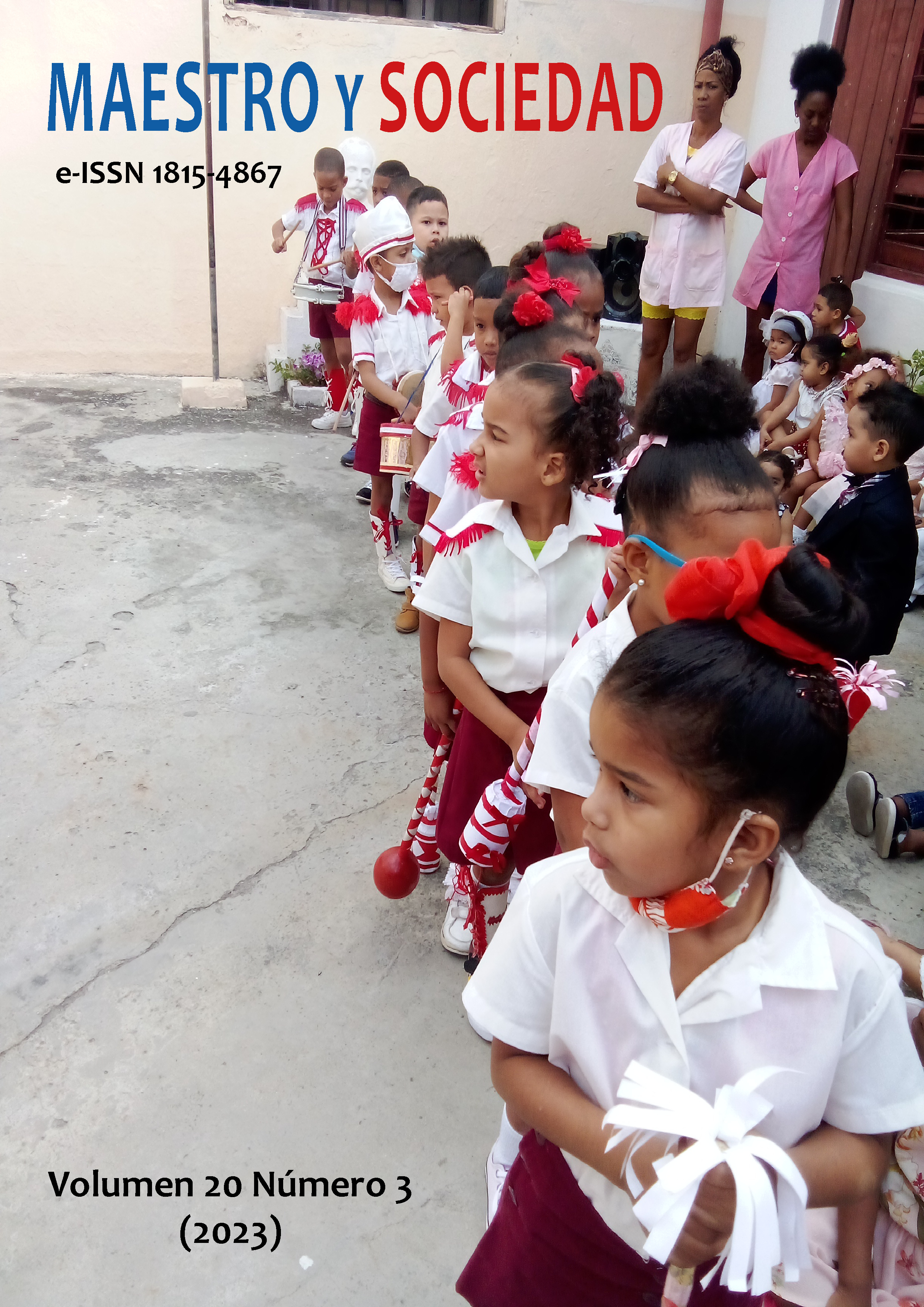Attitudes towards statistics in students of the Escuela Superior Naval Cmdt. Rafael Moran Valverde
Attitudes towards statistics in students of the Escuela Superior Naval Cmdt. Rafael Moran Valverde
Keywords:
Attitude towards Statistics, Labor Camp, Military Regime, TrainingAbstract
Introduction: The present work shows a descriptive investigation, whose objective is to measure the attitude towards Statistics within the academic and military training, in this way identify how the knowledge of the students in the Naval Superior School affects the professional field. cmdt. Rafael Moran Valverde - ESSUNA of the University of the Armed Forces ESPE, for which the scale of attitudes towards statistics, designed and validated by Auzmendi (1992), starts from the answers obtained for the items by a sample of 54 students from the ESSUNA. Materials and methods: The statistical technique that was applied to determine the factors was exploratory factor analysis using the Jamovi statistical software, where the values of the Barlett sphericity test and the Kayser Meyer Olkin index known as KMO were determined. Results: The results were 0.000 and 0.696 respectively, by eliminating the variable that obtained the lowest score, 0.578, in the Anti-image Correlation Matrix, “24. If I had the opportunity, I would enroll in more statistics courses than are necessary”, indicates that it is good to carry out exploratory factor analysis, where the factors importance, anxiety, desire to know, usefulness, fun and preparation are obtained. The main results in the descriptive analysis indicate that the average age of the interviewees is 21.7 years, 87% are men and 13% are women. Discussion: The highest reliability in the factors occurs in the Importance (0.895) and the lowest in the Preparation (0.561); the factorial analysis extracts six dimensional factors explaining 73.6% of the total variance of the data considering its acceptance. Conclusions: It is concluded that the appropriate learning techniques will promote the importance of the subject and will motivate the study and its application in the labor field.
References
Álvarez Contreras, D. E., Díaz Pérez, C. M., & Herazo Morales, R. (2023). Factores académicos asociados al proceso de investigación formativa en las instituciones educativas del sector oficial de Sincelejo, Sucre. Región Científica, 2(1), 202319. https://doi.org/10.58763/rc202319
Cartagena Beteta, M., Santana González, Y., Revuelta Domínguez, F. I., & Pedrera Rodríguez, M. I. (2023). Creencias Docentes en la Integración Curricular de las TIC en Educación Religiosa en Perú. Revista Universidad y Sociedad, 15(1), 185-198.
Darias, E. (2000). Escala de actitudes hacia la estadística. Psicothema, 12(2),175-178. http://www.psicothema.com/psicothema.asp?id=542
Escalante, E., Repetto, A. y Mattinello, G. (2012). Exploración y análisis de la actitud hacia la estadística en alumnos de psicología. Liberabit. http://www.scielo.org.pe/scielo.php?script=sci_arttext&pid=S1729-48272012000100003&lng=es&tlng=es.
Estrada, A., Batanero, C. y Fortuny, J. (2004). Un estudio comparado de las actitudes hacia la estadística en profesores en formación y en ejercicio. Enseñanza de las ciencias: revista de investigación y experiencias didácticas, 22(2), 263-273. https://www.raco.cat/index.php/Ensenanza/article/view/21977.
Escobar, K. y Ocampo, M. (2016). Relació n entre las estrategias de aprendizaje y el rendimiento académico en estudiantes de segundo año de una Escuela de formación naval – militar de carácter tecnológico. Universidad del Norte. http://manglar.uninorte.edu.co/jspui/bitstream/10584/7563/1/katia.pdf
Flores López, W. O., & Auzmendi Escribano, E. (2015). Análisis de la estructura factorial de una escala de actitud hacia las matemáticas. Aula De Encuentro, 17(1). https://revistaselectronicas.ujaen.es/index.php/ADE/article/view/2256
Gaibor, J., Liger, T., Safla, J., Fernandez, M. y Cholota, L. (2018). El estrés en las Fuerzas armadas: La situación de estrés en los aspirantes a soldados en la ESFORSE, promoción 2015-2017. Revista de Ciencias de Seguridad y Defensa, 3(3), 50-60. http://geo1.espe.edu.ec/wp-content/uploads//2018/06/5.pdf.
Kerlinger, F. N. (1986). Behavioral research: a conceptual research. New York: Holt, Rinehart and Winston (traducción al español: Enfoque conceptual de la investigación del comportamiento. México: Nueva Editorial Interamericana, 1988).
Méndez, Diego, & Macía, Felipe (2007). Análisis factorial confirmatorio de la escala de actitudes hacia la estadística. Cuadernos de Neuropsicología / Panamerican Journal of Neuropsychology, 1(3),337-345.
Mondejar, J., Vargas, M. y Bayot, A. (2008). Medición de la Actitud hacia la estadística. Influencia de los procesos de estudio. Revista electrónica de investigación Psicoeducativa, 6(3),729-748. http://repositorio.ual.es/bitstream/handle/10835/635/Art_16_261.pdf?sequence=1&isAllowed=y.
Rojas-Kramer, C., Escalera-Chávez, M., Moreno-García, E., & García-Santillán, A. (2017). Motivación, ansiedad, confianza, agrado y utilidad. Los factores que explican la actitud hacia las matemáticas en los estudiantes de economía. Revista INFAD de Psicología. International Journal of Developmental and Educational Psychology., 2(1), 527-540. https://doi.org/10.17060/ijodaep.2017.n1.v2.875
Sandoval, L. E. & Otálora, M. C. (2015). Desarrollo corporal y liderazgo en el proceso de formación militar. Rev. Cient. Gen. José María Córdova, 13(16), 33-53. https://www.revistaesmicgjmc.com/index.php/esmic/article/view/30/29.
Downloads
Published
How to Cite
Issue
Section
License
Copyright (c) 2023 Margarita Palma Samaniego, Sonia María Barragán Lucas, Iván Ignacio Bastidas Lara, Nelly Panchi Castro

This work is licensed under a Creative Commons Attribution-NonCommercial-NoDerivatives 4.0 International License.
This journal provides immediate open access to its content, based on the principle that offering the public free access to research helps a greater global exchange of knowledge. Each author is responsible for the content of each of their articles.



























 Universidad de Oriente
Universidad de Oriente 